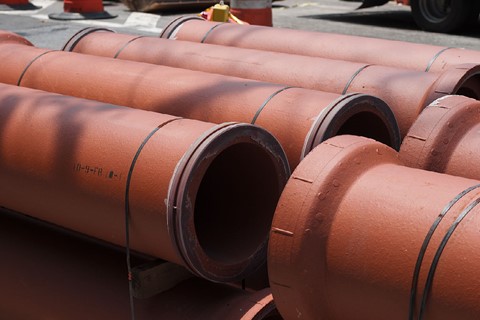The effects of the coronavirus can be felt at all levels. Many businesses were forced to reduce daily operations or close altogether. Recently, business owners are reopening again, hoping to pick up where they were forced to leave off. In the wake of this, questions may arise as to whether their building’s stagnant water supply needs to be addressed and if so, what to do about it. This type of water sanitation can be challenging for vacant buildings that have gone unused for so long. So, our team has gathered up several things you’ll need to know to get your commercial building’s water supply back up to standards.
Understand The Risks of Inaction
It cannot be emphasized enough how important it is to address stagnant water supplies in low-use or no-use buildings. Plumbing is meant to be used on a steady basis. So, when pipes go for long periods without usage, the water remaining within them will start to degrade, resulting in the development of lead and mold, or encouraging the growth of harmful bacteria such as Legionalla. This bacteria can cause a disease known as Legionnaires, which is a severe form of pneumonia brought on by inhaling airborne droplets that carry Legionella bacteria. As such, the prevention of waterborne diseases and contaminants should be of the highest priority for any building reopening.
You can also reach out to your local public health authorities to learn more about proper water management plans and courses of action for reopening your building after an extended shutdown. Additionally, the Safe Drinking Water Act (SDWA) provides national standards for public drinking water.
Get To Know Your Plumbing
You should familiarize yourself with the configuration and usage of your building’s pipe and flush out any stagnant water from the water sources in your building. The time and amount of flushing will depend on the building and water system, but it should be a first step to remove the current water supply. Be sure to flush with both hot and cold water, ensuring the hot water reaches its maximum temperature. Additionally, flush the service pipe that runs to your building first before flushing the pipes in the building. You may need to coordinate with your water utility company if you are unsure where your main line is or how to flush it out.
You can also reference the Centers for Disease Control (CDC), which offers guidance on commercial building water systems and their management. And in most instances, it will be necessary to have a professional come out and inspect your pipes for leaks, corrosion, and/or contamination.
Test, Repair, and Replace
You will also need to test the safety and quality of your water treatment system and the water that flows in and out of it. This process may include pipeline disinfection, water main sterilization and/or water tank disinfection. Water main and pipeline disinfection will kill and remove harmful bacteria and eliminate waterborne pathogens. For water tanks, chlorine is added to the water to kill bacteria, viruses, fungi, etc. This ensures a safe water supply for employees and other consumers in your building.
You may also need to inspect your backflow prevention assembly, which prevents the flow of water from the building back into the public water system. One cause of backflow is a sudden increase in the pressure of wastewater as opposed to the pressure of clean water, also known as back pressure. Another case of backflow can also be back siphonage, which is the decrease of pressure from the water supply and usually occurs by interruptions in your building’s water.
Professional testing typically includes gathering samples of the water and sending it off to a certified lab. Once you have the results, you can make a plan of action in getting your water system up and running again.
Finally, in some cases, you may need to repair or even replace certain parts of your building’s water system. This may include pumps, tank level controls, backflow devices, etc. And your water systems may need to be re-sanitized or disinfected before they can be used.
In these instances, it is best to have professional experts come out to take care of the issues. So, when you’re ready to get your building back up and running, reach out for a quote ! Our technicians’ experience and comprehensive knowledge is unsurpassed. Whether it’s servicing, repairing or installing chlorination equipment, we’ll be sure to offer prompt and efficient service while adhering to regulations, manufacturer’s procedures, and safety practices.




